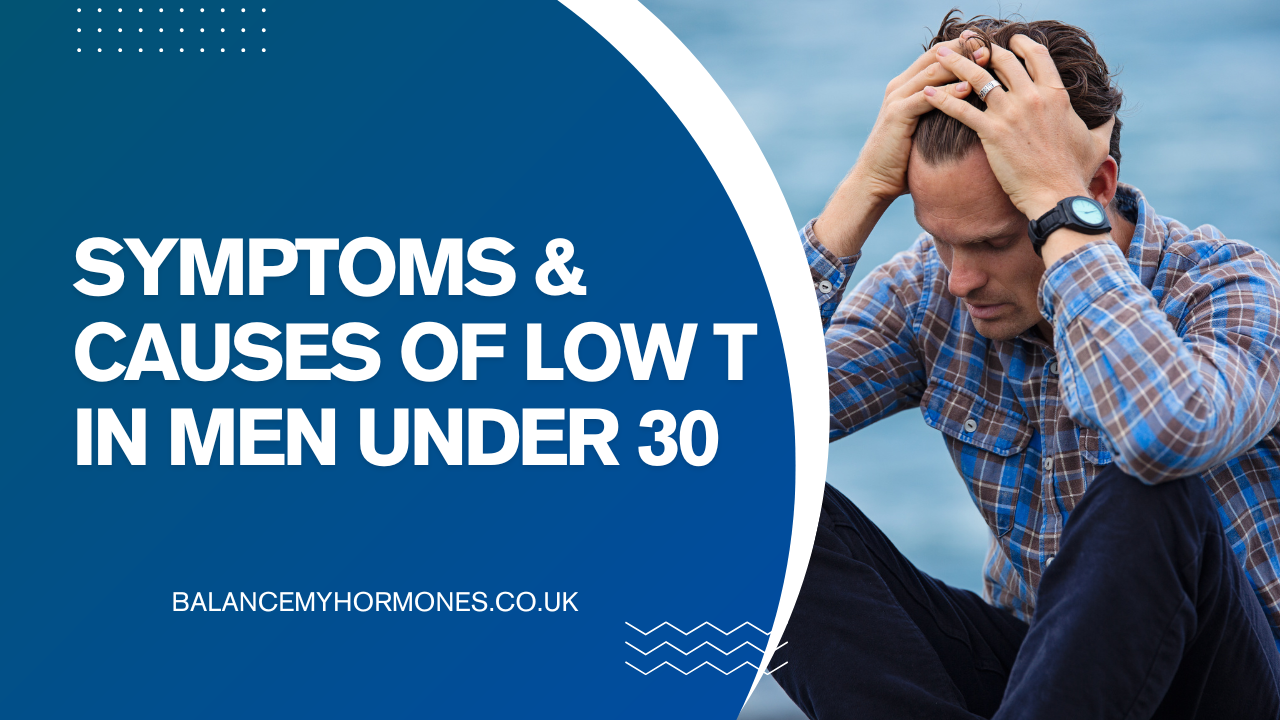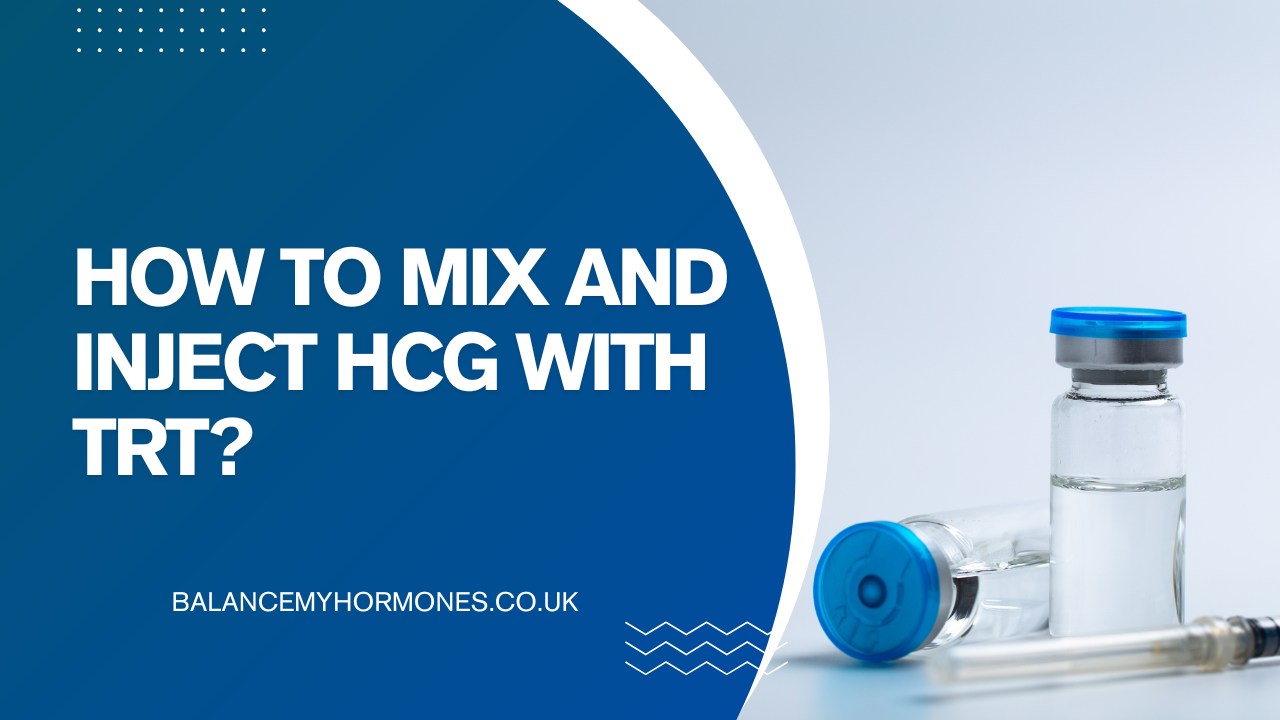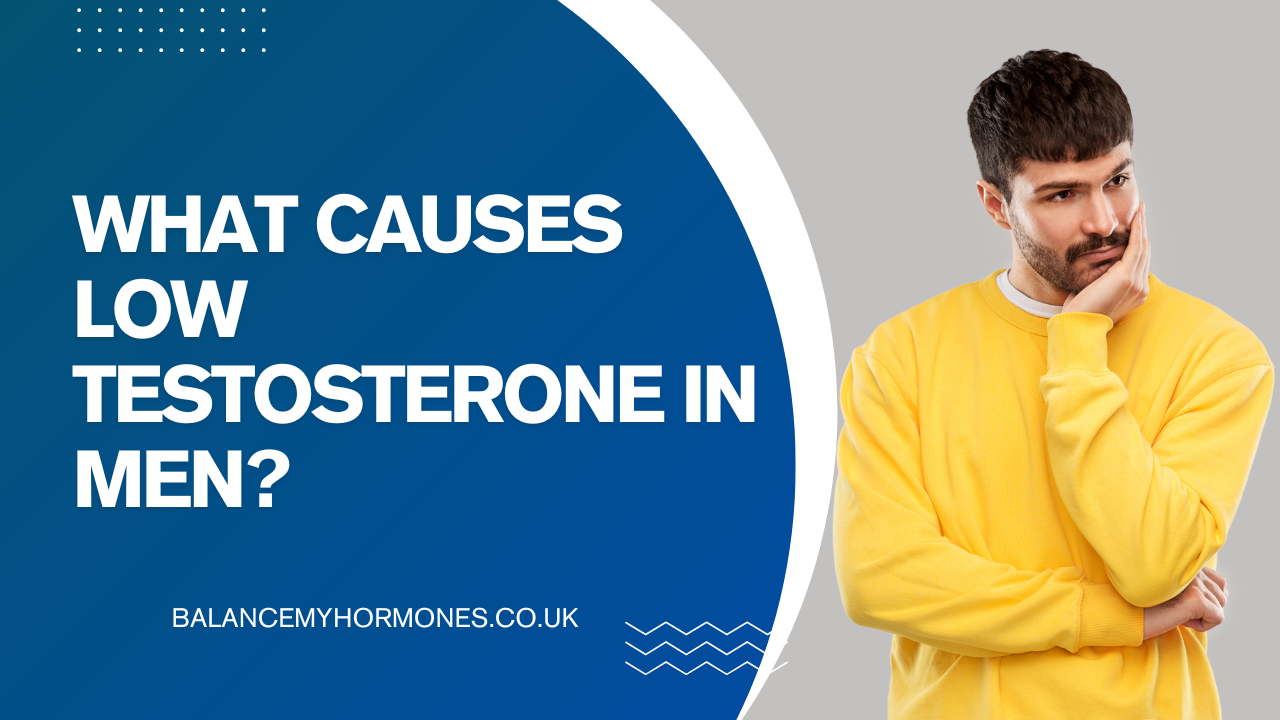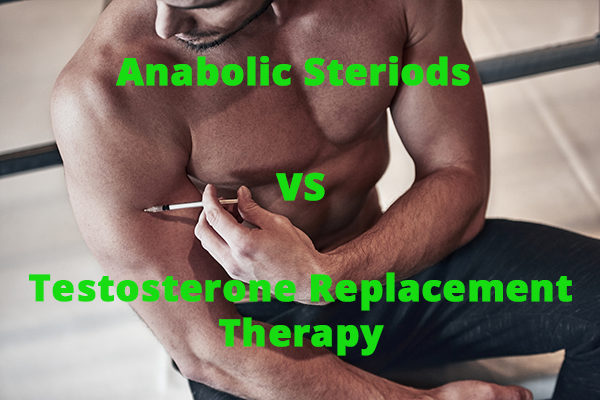
By Mike Kocsis | 7 minutes read | Last updated: September 25, 2025 Categories: Testosterone
Medically Reviewed by Dr. George Touliatos
Low testosterone isn’t just an older man’s problem, it’s increasingly affecting men under 30 and many don’t even realise it.
There are various symptoms of low testosterone in young males, such as erectile dysfunction, loss of muscle mass, reduced sex drive and depression.
Often low testosterone causes are rooted in everyday life: chronic stress, an increase in weight, poor sleep and alcohol abuse. However, certain medical conditions like Klinefelter syndrome, tumours of the pituitary gland and insulin resistance can also cause this problem.
9 Symptoms of low testosterone in men under 30
Men with primary hypogonadism or secondary hypogonadism can experience the following signs and symptoms:
1. Decrease in the semen volume
Testosterone impacts semen and sperm production. Therefore, its deficiency can cause a reduction in the semen volume and sperm count, contributing to male infertility in some men.
2. Loss of facial and body hair
Even though balding is natural for older men, men under 30 may also experience it due to low internal testosterone production, as testosterone plays an important role in hair growth.
3. Lack of energy
Men suffering from low testosterone often feel tired, fatigued, and exhausted even after sleeping 8 hours at night. They simply don’t feel as energetic as they used to feel.
4. Cognitive issues
You may experience a drop in mental clarity and have problems concentrating.
5. Reduction in muscle mass
Testosterone is involved in the muscle-building process. So, when your body doesn’t produce enough testosterone, you start losing muscle mass. Gaining muscles despite regular exercise becomes a real struggle.
6. Decreased libido
Low testosterone in young men can make them lose interest in sex, even in situations that once felt exciting. This sexual dysfunction can further cause self-esteem and relationship issues, impacting mental health as a result.
7. Trouble getting an erection
Testosterone is involved in the production of chemicals that cause an erection. So, a lack of testosterone can cause difficulty in getting an erection, leading to erectile dysfunction.
8. Loss of bone mass
Men with testosterone deficiency can lose their bone density and mass. They become more prone to bone fractures and similar issues.
9. Increase in body fat
Men with low testosterone have more body fat. It can also lead to gynecomastia – an increase in breast tissue in men. This problem often occurs due to slower metabolism and increased body fat storage due to decreased testosterone.
Some ads for testosterone treatments often misguide people by saying that simply feeling cranky means you’ve low testosterone levels. However, that is not always true.
There are many signs of low testosterone that you may feel regardless of your age. You need to have a testosterone test to find whether these signs are because of low T or some other reason.
What causes low testosterone in young males?
Men under 30 can have low T due to certain medical conditions, health problems and various lifestyle factors.
You can have low testosterone if you are born with any of the following genetic conditions:
- Noonan syndrome
- Klinefelter syndrome
- Kallmann syndrome
- Prader-Willi syndrome
- Myotonic Dystrophy
- Ambiguous genitalia
You may also develop low T in your 20s if:
- You have high blood pressure.
- You have diabetes.
- You have a pituitary gland or hypothalamus disease that’s affecting the hypothalamic pituitary gonadal axis and hormonal production.
- You are overweight/obese or have high cholesterol levels.
- You take anabolic steroids or illegal drugs.
- You drink alcohol excessively.
- You are having cancer treatment (radiotherapy or chemotherapy) that’s impacting testicular function.
- You have primary testicular failure.
- You have injured one or both testicles during an accident.
- Your testicles were removed due to cancer or some other reason.
- You have low thyroid function.
- You have obstructive sleep apnea.
- You have poor lifestyle habits, including a poor diet, insufficient sleep, and lack of exercise.
How common is low testosterone in young males?
Low T is not as common in younger men as it is in older males. In fact, less than 1% males have it in their 20s.
However, this percentage increases as the age increases. Around 20% of men older than 60 have testosterone deficiency, and 50% of men aged 80 plus have this problem.
One study found that men over 45 are 2.4 times more likely to have a low testosterone level. Similarly, men with diabetes have a 2.1 times higher chance of having low testosterone and men with high blood pressure are 1.8 times more prone to low testosterone.
How to find out the cause of low T?
Low T cause is diagnosed with the help of tests, medical history and physiological checks. Your doctor will first confirm you are testosterone-deficient with a testosterone blood test that measures total and free testosterone levels.
After this, they will conduct a few more tests, such as luteinizing hormone test, prolactin test, follicle-stimulating hormone (FSH) test and sex hormone binding globulin (SHBG) test to diagnose low testosterone cause.
A treatment plan will be designed based on the identified reason for the androgen deficiency.
Treatment for low testosterone in young males
Low T treatment in young males depends on the cause of the problem. For instance, if the cause is a lifestyle factor (let’s say weight), your doctor will suggest losing weight to bring hormone balance within the body.
However, if the cause is a genetic condition or another health problem, you may be prescribed a hormone therapy called testosterone replacement therapy (TRT).
Testosterone replacement therapy for men under 30
Testosterone therapy involves giving the body external testosterone to replace what it isn’t producing enough of on its own. It comes in various forms like testosterone injections, testosterone pellets, skin patches, creams and gels.
Many men report improvement in their testosterone levels and low T signs after starting this hormone replacement therapy.
However, it’s important to note that TRT comes with certain risks and side effects. With TRT, there may be an increased risk of high red blood cells count, prostate cancer, breast enlargement, etc., in some individuals. That is why it’s not a suitable treatment for all.
Doctors conduct testosterone blood tests and other tests to identify low T and its cause. They evaluate your overall health thoroughly before deciding on whether to prescribe you testosterone or not.
Discuss your low T treatment options and their pros/cons with your healthcare provider before choosing a treatment plan.
Conclusion
Low blood testosterone is common among older men, but men under 30 can also develop this condition due to various reasons.
Low T symptoms can influence your life negatively; therefore, getting the right treatment on time is the best option.
Testosterone replacement therapy is one of the popular treatments that has helped many men regain happiness, energy, and sex drive. Talk to your doctor to determine whether you are the right TRT candidate.
At Balance My Hormones, we offer reliable primary and secondary hypogonadism treatment options. Book your free consultation with us today to learn about our treatment plans.
References
De Silva, N.L., Papanikolaou, N., Grossmann, M., Antonio, L., Quinton, R., Anawalt, B.D. and Jayasena, C.N., 2024. Male hypogonadism: pathogenesis, diagnosis, and management. The Lancet Diabetes & Endocrinology, 12(10), pp.761-774.
Chioma, L. and Cappa, M., 2023. Hypogonadism in male infants and adolescents: new androgen formulations. Hormone research in paediatrics, 96(6), pp.581-589.
Cohen, J., Nassau, D.E., Patel, P. and Ramasamy, R., 2020. Low testosterone in adolescents & young adults. Frontiers in endocrinology, 10, p.916.
Evidence Based Research
This article has been researched and written based on scientific evidence and fact sheets that have then been crossed checked by our team of doctors and subject matter experts.
References, sources and studies used alongside our own in-house research have been cited below, most of which contain external clickable links to reviewed scientific paper that contain date stamped evidence.
Our team of healthcare experts and GMC registered doctors are licensed to UK GMC standards. We strive to provide you with the latest evidence based, researched articles that are unbiased, honest and provide you with accurate insights, statistics and helpful information on the discussed topic to ensure you gain a better understanding of the subject. You can read more about our Editorial Process by clicking here.
We value your feedback on our articles, if you have a well-researched paper you would like to share with us please contact us.
Quick Low Testosterone Test
If you know your total testosterone reading from a previous blood test input the results to the left above to see if your testosterone levels are normal.
Low Testosterone Levels
You may have low testosterone depending on the symptoms you have, please contact us to find out how we can help.
Please Retry
The Total Testosterone Level You Entered Is Incorrect. Figure Must be in nmol/L you can use our converter here.
Normal Testosterone Levels
Your testosterone levels appear to be in the normal range.
LOOKING GOOD!
You must be over 38, have had your ovaries removed or have suffered with premature menopause to warrant further hormone tests.
Further investigation needed
Please contact us to discuss your hormones, we need your total testosterone levels to validate your hormone deficiency. You can order a blood test here.
Low Testosterone Levels
You may have low testosterone depending on the symptoms you have, please contact us to find out how we can help.
High Testosterone Levels
You appear to have higher than normal testosterone levels, please contact us for further investigation.
Normal Testosterone Levels
You appear to have normal testosterone levels. Contact us if you have any concerns.
 Mike Kocsis has an MBA with a focus on healthcare administration and is an entrepreneur and medical case manager for Balance My Hormones which offers medical services in the UK and Europe. Mike has over 20 years of experience in the healthcare sector, much of that working with people who have hormone imbalances. Mike has appeared on
Mike Kocsis has an MBA with a focus on healthcare administration and is an entrepreneur and medical case manager for Balance My Hormones which offers medical services in the UK and Europe. Mike has over 20 years of experience in the healthcare sector, much of that working with people who have hormone imbalances. Mike has appeared on 

